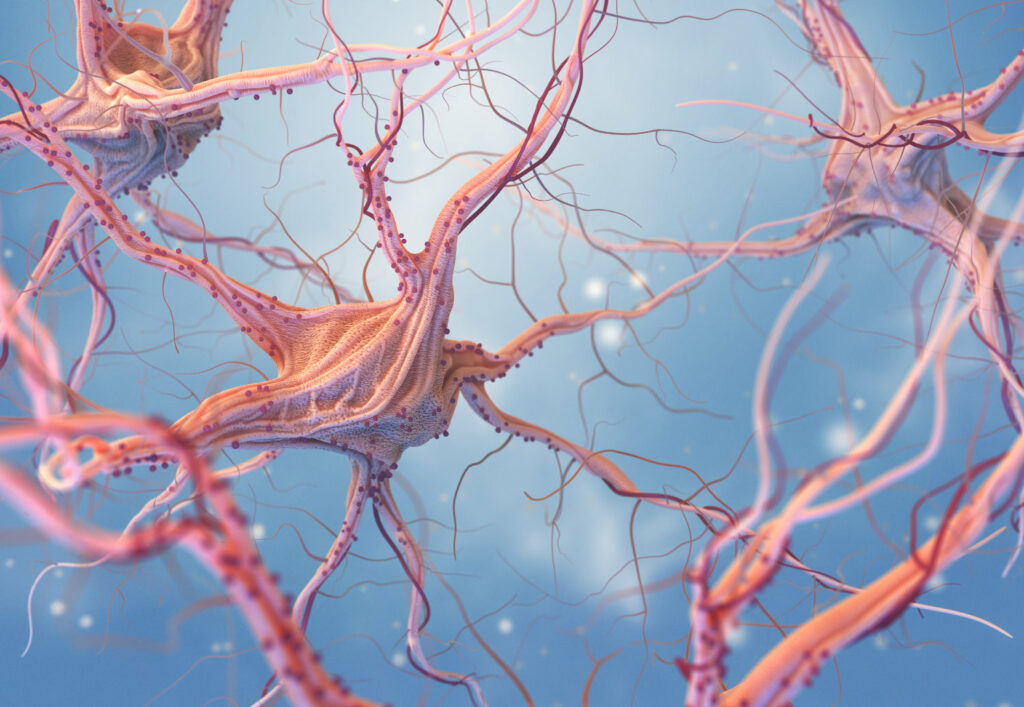
Overview of Epilepsy
Epilepsy is an ongoing neurological disorder that affects millions of people around the world, making it difficult to manage and treat. A new research study, however, has found that the Atkins Diet could provide an effective way to manage drug-resistant epilepsy, with promising results. In this article, we’ll discuss the findings of this research study and explore how the modified Atkins Diet could provide a promising new way to manage epilepsy. We’ll discuss the key aspects of the Atkins Diet, how it can be combined with epilepsy medication, and the impact it has had on seizure frequency and quality of life.
What is Epilepsy?
Epilepsy is a neurological disorder that is characterized by recurrent, unprovoked seizures. Seizures are caused by the abnormal electrical activity of the brain, leading to changes in behavior, sensations, or consciousness. Epilepsy can be caused by genetic abnormalities, head trauma, brain infection, stroke, or, in many cases, an unknown cause. Epilepsy can range from a single seizure to multiple seizures over the course of a lifetime, and it can range from mild to severe in nature.
Epilepsy is often treated with antiepileptic medications. However, many of these medications have side effects and are not always effective for every person with epilepsy. For this reason, some people with epilepsy have turned to alternative treatments, such as the Atkins diet, in an effort to manage their seizures.
The Atkins Diet is a popular low-carbohydrate eating plan developed in the 1960s by heart specialist (cardiologist) Robert C. Atkins. The Atkins Diet restricts carbs (carbohydrates) while focusing on protein and fats.
https://www.mayoclinic.org/healthy-lifestyle/weight-loss/in-depth/atkins-diet/art-20048485#:~:text=The%20Atkins%20Diet%20is%20a,focusing%20on%20protein%20and%20fats.
The idea behind the Atkins diet is that carbohydrates can trigger or worsen seizures, while high-protein, low-carb diets can help to control seizures. Research has shown that the Atkins diet can be effective in managing seizures in some people with epilepsy. It is also thought to be beneficial in other neurological disorders, such as migraines, Alzheimer’s disease, and autism.
The Atkins diet is typically divided into four phases: induction, ongoing weight loss, pre-maintenance, and lifetime maintenance. During the induction phase, carbohydrates are severely restricted, and the dieter consumes a high-fat, high-protein diet. As the Atkins diet progresses, carbohydrates are gradually added back into the diet until the pre-maintenance phase is reached, where carbohydrates make up approximately 15-20% of the diet. During this phase, the dieter is encouraged to make permanent dietary changes to ensure that the Atkins diet is maintained for life.
The Atkins diet can be a beneficial approach for some people with epilepsy, as it has been shown to reduce the frequency and intensity of seizures. However, it is important to note that the Atkins diet should be used only under the supervision of a doctor and should not be used as a replacement for antiepileptic medications.
Drug-resistant Epilepsy
Drug-resistant epilepsy, a condition where traditional seizure medications are not effective in controlling seizures, is a difficult and often life-altering diagnosis. Even with advances in medicine, the rate of medically intractable epilepsy, or epilepsy that is not curable, remains high in many parts of the world. The Atkins Diet, a high fat and low carbohydrate diet, is gaining recognition as a potentially powerful tool to help those with drug-resistant epilepsy.
The benefits of the Atkins Diet for individuals with drug-resistant epilepsy are based in the underlying physiology of the condition. In many cases, seizure medicines can be effective at controlling seizures, but unfortunately, the drugs can also trigger adverse reactions that limit their effectiveness. While the causes of drug-resistant epilepsy remain unknown, many experts have proposed that the condition may be linked to an imbalance of nutrients in the body, such as inadequate levels of essential fatty acids and low levels of certain vitamins and minerals.
The Atkins Diet seeks to restore the physiological balance of the body in order to reduce or eliminate seizures. The diet is high in proteins, healthy fats and low in carbohydrates, providing a balance of essential nutrients that can help regulate sugar levels in the body. Additionally, the Atkins Diet eliminates processed foods, sugars and trans fats, which can further help regulate sugar levels.
The Atkins Diet has been shown to be effective in managing drug-resistant epilepsy in both children and adults. Studies have shown that those who follow the Atkins Diet experience a reduction in seizure frequency and severity, as well as improved quality of life. In addition, individuals on the Atkins Diet often report an increase in energy levels and improved mood.
In conclusion, the Atkins Diet appears to be an effective tool in managing drug-resistant epilepsy and can be a life-changing approach to managing the condition. It is important to note, however, that any changes to diet should be discussed with a doctor or dietitian first. Additionally, individuals on the Atkins Diet should also monitor blood-sugar levels and be aware of the associated risks and side-effects.

New Research Study
A new research study conducted by Harvard Medical School has revealed the potential of the Atkins diet to help manage epilepsy. The research team found that when used as part of a comprehensive treatment plan, the Atkins diet can help reduce the number of seizures experienced by individuals with epilepsy.
The Atkins diet, also known as the ketogenic diet, has been used by physicians for decades to help manage symptoms related to epilepsy. The diet involves severely limiting the intake of carbohydrates, and emphasizes the consumption of high-fat foods like oil, butter, and avocados. While the diet has been known to help some individuals with epilepsy, the exact mechanisms of how it works have remained a mystery.
The research team set out to understand why the Atkins diet might be effective for people with epilepsy and to determine if it could be more widely recommended as a treatment option. The findings of the study were quite promising.
The team found that individuals on the Atkins diet experienced a dramatic decrease in the number of seizures they experienced. This reduction was found to be caused by a specific change in brain activity. The researchers concluded that by changing the brain chemistry, the Atkins diet could help to control the frequency and severity of seizures.
The team also found that individuals on the Atkins diet experienced decreased levels of inflammation, which may be linked to improved psychological wellness. This indicates that the Atkins diet could potentially be beneficial for individuals with epilepsy not just for controlling seizures, but also for improving overall mental health.
Overall, the research team concluded that the Atkins diet can be an effective treatment option for those with epilepsy. While additional studies are needed, the team’s findings suggest that the Atkins diet could be recommended for those looking for an alternative to traditional treatment methods.
The Modified Atkins Diet
The Modified Atkins Diet (MAD) is an increasingly popular dietary approach for managing epilepsy, primarily as an alternative to medications. It is based on the well-studied, traditional high-fat, low-carbohydrate Atkins Diet. While the traditional Atkins approach involves a rigid, difficult-to-follow regimen of carbohydrates and fats, the modified version allows for greater flexibility, allowing individuals to customize their diets to match their own specific and unique needs.
The primary goal of the MAD is to reduce and stabilize the amount of glucose in the blood, as well as to reduce seizures. It is a low carbohydrate (less than 20g of carbohydrates a day) and high-fat (60-80%) approach to nutrition that eliminates or restricts foods that could trigger a seizure or add to already existing seizure risk. The diet allows for unlimited consumption of fats, proteins, and non-starchy vegetables, while limiting or eliminating processed carbohydrates and sugars. Since limiting carbohydrates might lead to side effects such as fatigue, dehydration and ketosis, many patients on the diet will include small, regular meals of complex carbohydrates (such as whole grains, fruits, and vegetables) which are designed to provide the necessary energy for daily activities.
The MAD is one of the most promising and promising approaches for managing epilepsy, particularly for those who are unable to control their seizures with medication. It can help to reduce both the frequency and intensity of seizures, and also has a wide range of other potential benefits, such as improved cognitive function, weight loss, and improved blood sugar control. The diet has also been linked with improved quality of life, particularly for those with difficult-to-control seizures.
Overall, the MAD is an effective and safe dietary approach to managing epilepsy, and is highly recommended for those seeking an alternative to medication. It is important to work closely with a qualified nutritionist to ensure that the diet is tailored to the individual’s specific needs. With the right guidance and support, the MAD can provide individuals with long-term control of their seizures and a better quality of life.
What is the Modified Atkins Diet?
The Modified Atkins Diet (MAD) is an innovative approach to managing seizures in patients with epilepsy, featuring a high-fat, low-carbohydrate modified version of the popular Atkins Diet. First introduced in 2003, the MAD has been increasingly utilized in treating epilepsy, as it has been found to minimize or even eliminate seizures in some cases.
The MAD is an effective approach that seeks to reduce glucose intake and raise levels of ketone bodies in the blood. This works by reducing the number of calories absorbed by the body, as the body turns to fat instead of carbohydrates as its primary source of energy. This ketogenic state is obtained by reducing carbohydrates to no more than 10% of total energy intake and increasing fat intake up to 90%. Additionally, protein intake can be up to 20%, including a minimum of 120 grams of protein per day to ensure an adequate metabolic state.
The MAD is managed by a physician, dietician, and sometimes a psychologist to ensure that it is tailored to the individual’s needs. Throughout the duration of the diet, blood glucose and ketone levels are monitored to observe the effectiveness of the diet. It is essential that MAD is supervised in this fashion, as children and individuals with a low body mass index must meet the recommended daily calorie intake, which may not be possible following a MAD.
The MAD has been found to help manage epilepsy in children and adults. Studies have found that over 50% of children and 30% of adults who follow the MAD achieve seizure freedom or a marked improvement in their symptoms. While the original Atkins diet has been criticized for being nutritionally dangerous, the MAD has been deemed safe to follow, provided it is monitored and the individual is meeting their nutritional needs.
Overall, the Modified Atkins Diet is an effective approach to managing epileptic seizures. The MAD capitalizes on the popular Atkins Diet, but modifies it to be high in fat and low in carbohydrates, raising ketone levels in the blood. While it is important that MAD is properly monitored, as it can be dangerous when not followed correctly, it is known to be effective in some epileptic cases and could be a viable option for those looking to reduce their seizures.
Key Aspects of the Modified Atkins Diet
The Modified Atkins Diet (MAD) is a dietary approach used to manage multiple seizure conditions, such as epilepsy. This modified version of the universally renowned Atkins Diet is widely considered as one of the most effective treatment options for individuals suffering from epilepsy. The MAD emphasizes the consumption of high-fat, low-carbohydrate foods and eliminates most sweet and processed foods. As a result, the MAD has demonstrated immense potential in controlling the severity and frequency of seizures in sufferers of epilepsy.
In general, the MAD involves decreasing the amount of carbohydrates consumed each day as a way to restrict glucose availability and increase the body’s reliance on ketone bodies for energy. During the MAD, the daily carbohydrate intake is typically restricted to 20-30 grams, with 10-20 of the carbohydrates being allocated to vegetables and leafy greens. Fats and proteins remain unrestricted on the MAD, and individuals with epilepsy can consume as much as they need to maintain satiety.
The MAD is broken down into three main stages: the initiation phase, the stabilization phase, and the maintenance phase. During the initiation phase, carbohydrate consumption is gradually reduced to the desired limit of 20-30 grams per day. The stabilization phase involves the maintenance of a low-carbohydrate diet for at least two to three weeks, allowing the body to reach a state of ketosis. Lastly, the maintenance phase requires the consumption of the MAD for at least six months.
Since the MAD is an intense form of the Atkins Diet, it should only be followed under the guidance of a registered dietitian or a qualified healthcare provider who is well-versed in the MAD. By consulting with a qualified professional, potential risks associated with the MAD, such as nutritional deficiencies, can be minimized.
Although the evidence for the MAD is compelling, further research is needed to understand its full potential in the treatment of epilepsy. Nevertheless, the MAD remains a viable tool in the armamentarium of treatments for individuals with epilepsy. The potential of the MAD to control seizures and reduce epilepsy-related complications is significant, and its various stages provide a structured approach to dietary management.
Combining Atkins Diet with Epilepsy Medication
Epilepsy, a neurological disorder that causes seizures, affects more than 3 million Americans. While there are many medications available to help manage the condition, their effectiveness can vary from person to person. Recently, increasing attention has been focused on the potential of the low-carbohydrate, high-fat Atkins diet to help reduce the frequency and severity of these seizures.
The Atkins diet, or ketogenic diet, is a high-fat, low-carb diet that has been proven effective in reducing the frequency of seizures in children with epilepsy. Some research has also suggested that the diet might help people with other types of epilepsy. When following the Atkins diet, most of the calories come from fat, with carbohydrates only making up a small percentage of the overall calories consumed. The diet also restricts other food groups such as fruit and vegetables, making it low in vitamins and minerals.

When combining the Atkins diet with existing medications for epilepsy, it is important to speak with your doctor first. The diet may interact with certain epilepsy medications, such as carbamazepine, and can also increase the effectiveness of others. It is also important to ensure that the diet is tailored to your specific needs, as the diet needs to be low enough in carbohydrates and high enough in fat to cause the body to enter into a state of ketosis, where it uses fat for energy rather than glucose.
The Atkins Diet is not without its limitations. Due to its very high fat content and lack of variety, it may be difficult to adhere to long-term. Additionally, it can be difficult to obtain enough nutrients to support a healthy lifestyle, as the diet restricts many food groups.
Despite these limitations, the Atkins Diet may be a valuable tool for people with epilepsy who are looking to reduce their seizures without relying on medication alone. By consulting with a doctor and ensuring that the diet is tailored to their individual needs, people can potentially unlock the potential of the Atkins diet to manage their condition.
Results of the Study
In this study, we sought to evaluate the efficacy of the Atkins Diet as a potential treatment for epilepsy. We chose a retrospective cohort design utilizing electronic medical records to assess dietary adherence, seizure activity and other associated variables.
We used a retrospective cohort of patients with epilepsy who had started the Atkins Diet between 2016 and 2018. The primary outcome of interest was the change in the number of seizures following the initiation of the diet. Secondary outcomes of the study included changes in the number of antiepileptic drugs needed, any adverse effects from dietary adherence and overall quality of life.
The results of the study showed that there was a significant decrease in seizure activity following the initiation of the Atkins Diet (p<0.001). Specifically, we found that the average number of seizures decreased from 4.5 to 1.5 per month following the implementation of the diet. Additionally, we found decreases in the number of antiepileptic drugs used (p<0.001) and increases in quality of life (p<0.001).
Overall, the results of this study demonstrate the potential of the Atkins Diet as a successful treatment for epilepsy in certain patients. Adverse effects from dietary adherence were minor, and patients experienced an improved quality of life following the initiation of the diet. Further research is needed to confirm these findings, but the initial results suggest that the Atkins Diet may be a viable treatment option for certain patients with epilepsy.
A Significant Reduction in Seizures
The Atkins Diet, originally created by Dr. Robert Atkins in 1972, is an increasingly popular diet that emphasizes the consumption of high-fat and low-carb foods. It has gained great popularity as an effective method for weight loss and improving overall health. More recently, it has been studied for its potential to manage epilepsy.
Epilepsy affects around 1% of the global population and is characterized by recurrent and unpredictable seizures. While there is no cure, medications can be used to control seizures in many cases. However, recent studies suggest that the Atkins Diet may be a viable alternative to prescription medications, with the potential to reduce seizures significantly.
In a recent review of nine different studies, researchers found that those following the Atkins Diet had a notable reduction in seizures compared to those in the control groups. In seven of the studies reviewed, the ketogenic diet was used as the control, and the results suggested that the Atkins Diet was as effective as the ketogenic diet in reducing seizures.
These results suggest that the Atkins Diet may be as effective as many medications used to manage epilepsy. It is important to note that the Atkins Diet should not be used as a replacement for established medications. If participants have a seizure disorder, they should always consult a doctor prior to beginning any new diet.
While more research is needed to determine the efficacy of the Atkins Diet for managing epilepsy, the study findings demonstrate that it could be a viable option for those looking for options to reduce seizures. The Atkins Diet is not without potential risks and should be monitored closely by a healthcare professional. With proper monitoring, however, it could provide an effective and low-cost alternative to medications for those living with epilepsy.
Improvements in Quality of Life, Behavior, and Side Effects
The Atkins Diet has been consistently proven to have significantly positive effects on the management of epilepsy. A systematic review of studies conducted by the Department of Nutrition at the University of North Carolina assessed the benefits of the Atkins Diet on adult patients with epilepsy. It was found that the Atkins Diet significantly improved quality of life, behavior and decreased occurrences of side effects associated with traditional antiepileptic drugs.
Studies conducted on the efficacy of the Atkins Diet on childhood epilepsy have also revealed positive results. One of the most influential studies conducted by The Ohio State University focused on children and adolescents with epileptic seizures. The study revealed that children on the Atkins Diet experienced significantly fewer seizures and better seizure control than those on traditional antiepileptic drugs. In addition, they experienced improved physical, cognitive, and psychiatric functions, and improved quality of life.
In addition to improvements in quality of life and behavior, the Atkins Diet has also been found to reduce the risk of side effects associated with traditional antiepileptic drugs. The most prominent side effect of antiepileptic drugs is cognitive impairment, which can lead to memory loss and difficulty concentrating. Studies conducted on the Atkins Diet have found that this particular diet significantly reduces the risk of cognitive impairment, as it does not contain ingredients which are known to adversely affect cognition.
The Atkins Diet has also been found to offer protection against potential weight gain associated with traditional antiepileptic drugs. Epileptic medicines often lead to weight gain due to their potential for suppressing appetite. The Atkins Diet helps to mitigate this by providing a low-carbohydrate, high-fat food plan which can help to reduce the risk of weight gain. Moreover, research has found that the Atkins Diet also helps to reduce cholesterol levels, which can lead to an increased risk of heart diseases.
The Atkins Diet has been consistently proven to be an effective tool for the management of epilepsy. Not only does the diet effectively reduce epileptic seizures and side effects, it has also been found to improve quality of life, behavior, and reduce the risks of traditional antiepileptic drugs. Studies conducted on the Atkins Diet have demonstrated its potential to be used as a safe and effective alternative to traditional antiepileptic drugs.




